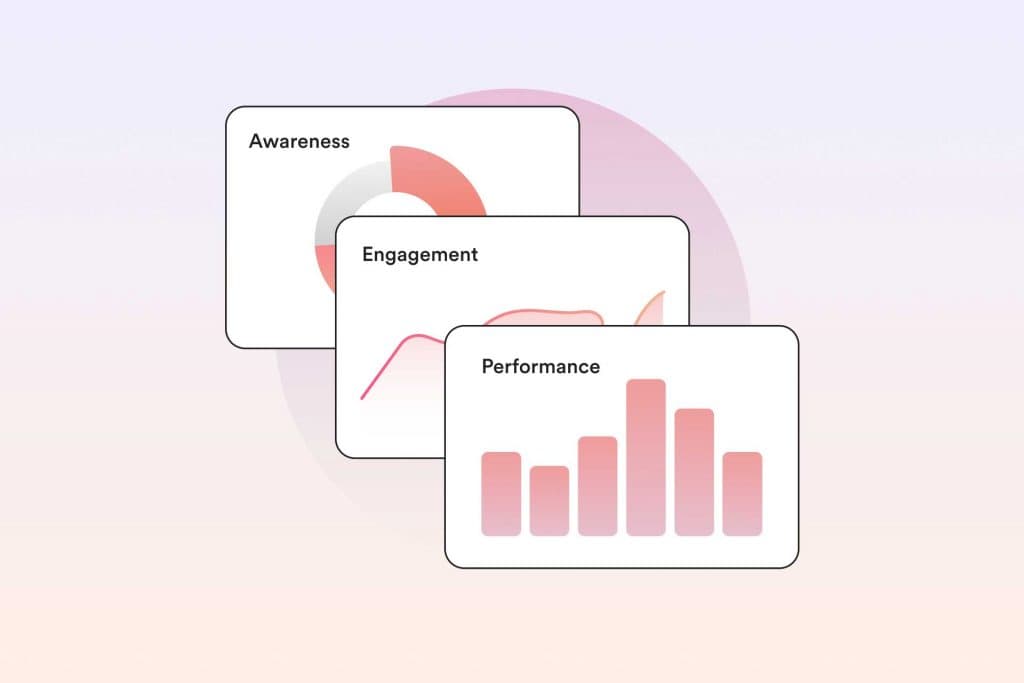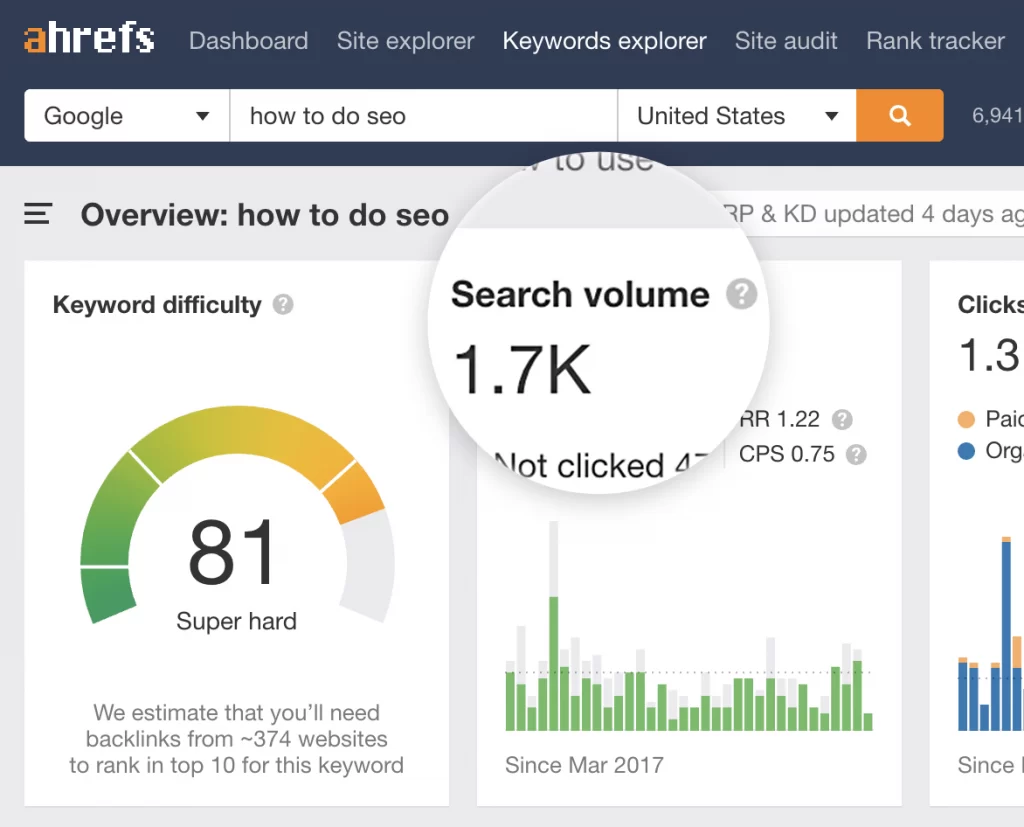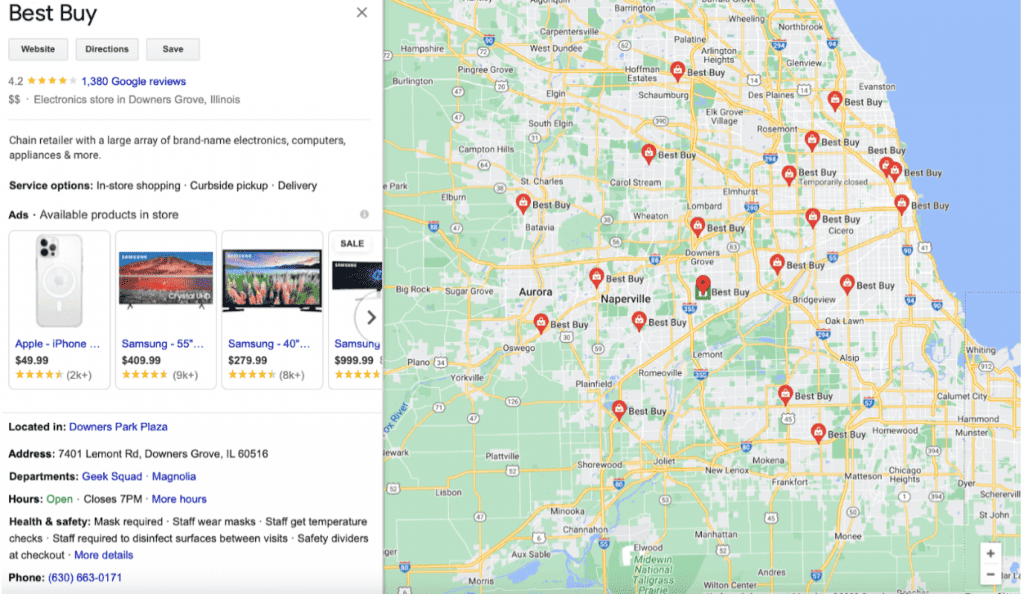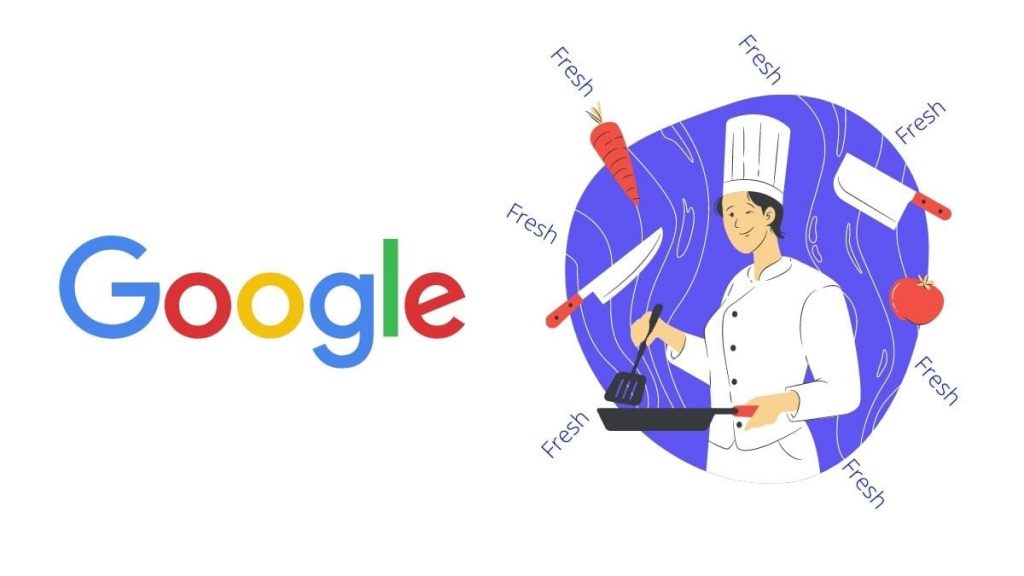The Ultimate Guide to Google Ranking Factors
Search engine optimisation (SEO) can feel like a black box sometimes. You tweak and optimise your site, yet your rankings barely budge. What gives?
The issue is that Google uses over 200 signals or “ranking factors” to determine where a page should rank in search results. If you want to move the needle and start climbing in rankings, you need to understand the main factors that Google cares about and optimise accordingly.
In this comprehensive guide, I'll demystify the significant elements influencing your site's rankings in 2024 and beyond. Ready to pull back the curtain on Google's secrets? Let's dive in.
Table of Contents
An Introduction to Ranking Factors

Before we get into the specific factors, it helps to understand precisely what a “ranking factor” is.
A ranking factor is any characteristic that Google's algorithm considers when determining the order of search results. This includes everything from your page content and HTML tags to your site speed and security.
Not all factors are weighted equally, however. Some have a much more significant impact on rankings than others. Google is notoriously tight-lipped about its algorithm, so we don't know the exact influence of each one. However, through extensive analysis and reverse engineering, SEOs generally know which factors matter most.
The key is to focus on optimising the aspects that pack the biggest punch—not just chasing every possible optimisation. As you'll see, certain factors like your content and links should be your top priority.
Now, let's explore some of the most influential ranking factors for 2024 and beyond!
Core Web Vitals: Google's Top Ranking Factor
In May 2020, Google shook up the SEO world by announcing that website speed and user experience signals would become central to its ranking algorithm.
Specifically, they introduced “Core Web Vitals” metrics focused on load time, interactivity, and visual stability. Pages that provide a poor user experience in these areas are penalised or demoted in rankings.
This marked a significant shift to prioritise the user over technical SEO optimisations that may game the system but offer no real value to visitors. The faster and smoother your site is, the better you'll rank.
But what exactly are the Core Web Vitals that Google cares most about? There are three:
Largest Contentful Paint (LCP)
This measures how fast the main content of a page loads. To provide a good LCP, your page should load its main content in under 2.5 seconds on mobile networks. Aim for under 1.5 seconds for the desktop.
First Input Delay (FID)
FID tracks how long a browser responds to user taps/clicks after the initial load. Pages should have an FID of less than 100 milliseconds to ensure a smooth experience.
Cumulative Layout Shift (CLS)
CLS measures the visual stability of a page as elements shift around during load. Minimal layout shift is critical. Aim for a CLS score of less than 0.1 to avoid abrupt jumps as the page builds.
Google expects sites to maintain good Core Web Vitals to rank well. This requires not just fast servers and optimised code but also mindful design. Craft thoughtful page layouts that load smoothly, avoid forced reflows as elements render, and prevent content jumping from poor ad placement.
Core Web Vitals are now crucial both for SEO and conversion optimisation. Tackling them should be the priority.
Optimising Page Experience Factors

Closely tied to Core Web Vitals is Google's “page experience” update that launched in June 2021. This update ensures users consistently have a positive experience across key UX dimensions on mobile devices.
Google identifies three main components of page experience:
- Loading performance encompasses Core Web Vitals metrics like LCP, FID, and CLS. Pages must load quickly and smoothly.
- Mobile-friendliness – Are pages mobile optimised with tap targets, minimal horizontal scrolling and zooming? Is content legible on smaller screens?
- Safe browsing – Does the site use HTTPS encryption? Are intrusive interstitials avoided? Is it free of malware threats, pop-ups, and misleading content?
- Intrusive ad experiences – Do ads negatively impact site speed or interrupt visitors with practices like auto-playing video?
Sites that excel across these areas of page experience receive a ranking boost on mobile. Those with poor experience are demoted.
So, in addition to optimising your technical performance, ensure your site is mobile-friendly and provides a safe, satisfying browsing environment. Eliminate intrusive ads, intercepts, and other frictions that degrade the visitor experience, especially on smartphones.
The Ongoing Importance of Content Quality

While page speed and UX reign supreme, content remains a hugely important ranking factor. After all, what good is a fast, polished site if it doesn't offer valuable information?
Google wants to satisfy user intent by surfacing each query's most relevant, authoritative pages. Unique, high-quality content focused on effectively addressing the searcher's needs is critical.
So, what elements of on-page content does Google evaluate?
Relevance
Google's algorithm aims to understand search intent based on query terms deeply. Craft content laser-focused on the topic and keywords the user is searching for. Don't go off on unrelated tangents or risk diluting your relevance signal.
Depth & Uniqueness
Thin, repurposed or duplicated content does poorly in rankings. Offer deep, expansive analysis and insight that searchers won't find elsewhere. Google rewards original information.
Accuracy & Expertise
Provide trustworthy information from respected sources. Demonstrate expertise through citations and thoughtful analysis. Errors and misleading content can negatively impact rankings.
Readability
Break complex topics into easily digestible sections with clear headers and paragraphs. Use short sentences, active voice, visual aids, and examples to boost comprehension.
Conversation Tone
Write engaging, conversational content that connects with readers rather than overly formal, stiff language. Modern searchers respond better to natural, down-to-earth writing.
Media Integration
Strategically incorporate images, infographics, videos, and other media to augment and enhance your content. Media engages visitors and surfaces your page in rich Search results.
Creating excellent content requires time yet delivers enormous SEO value. Set your pages apart with unique, authoritative analysis readers won't find anywhere else.
The Deferred Importance of Keyword Usage

Keyword optimisation within your content used to be a huge ranking factor. But with Google's improvements in understanding semantic search intent, exact match keywords matter less than relevance.
That said, keywords still play an essential role. Naturally, weaving your target terms throughout your content conversationally (“Keyword actions, not keyword stuffing!”) ensures Google identifies the appropriate topic.
Follow these best practices for keyword usage:
- Include keywords naturally in page titles, headers, URLs, meta descriptions, image alt text and 1-2 times in the opening paragraphs.
- Mention keywords a handful of times in the body content where it fits organically. Please don't overdo it.
- Focus on semantics and synonyms. You don't need to repeat the exact keyword over and over.
- Prioritise readability and natural phrasing over keyword density. Don't let SEO distract from your content quality.
While keyword optimisation isn't as crucial as before, smart integrations ensure your pages are discoverable for your core terms. Just keep usage natural and conversational.
Harness the Power of Links
Google uses links as its top indicator of popularity and authority. Pages linked from many reputable domains tend to rank higher.
This means a strategic focus on link-building is mandatory for ranking well today. There are two main link factors Google evaluates:
Quantity of Links
The more sites linking to your content, the stronger the value signal. But aim for a natural growth curve from relevant sites, not an artificial spike from low-quality links.
Quality of Links
Who is linking to you matters even more than quantity. Links from authoritative, reputable sites carry much more weight than generic directories or spam networks.
Prioritise earning links from trusted industry hubs, educational sites (.edu domains), and recognisable media outlets. Links from niche sites closely related to your content also provide a valuable contextual boost.
A blend of link quantity and quality is hugely influential. Forge natural links from respected sites through outreach, contributor partnerships, interviews and guest posts. Over time, an expanding domain count from diverse and relevant sites is SEO gold.
Social Signals & Engagement
Google wants to connect searchers with the most popular, engaging content on a given topic. So, it closely tracks how users interact with pages beyond just linking.
Social media provides a rich set of engagement signals for Google to incorporate. Factors like your share counts, comments, likes, and brand mentions all play a role in establishing authority and relevance.
Precisely, aim to build social signals on these networks:
- YouTube
Optimise your content for shareability with compelling headlines and summaries. Make it easy for readers to share and discuss your content across their networks.
Also, encourage engagement on your social profiles through community interaction, contests, and unique content. The more active social buzz your brand and content generates, the better.
Mobile Optimisation Factors

With over 60% of searches now on mobile, a seamless phone experience is mandatory. In addition to page experience metrics, Google evaluates other mobile factors:
Mobile Site Configuration
Does your site automatically redirect to a clean, mobile-optimised version? Don't force mobile users to pinch and zoom. Register mobile-specific versions of your URL.
App Availability
For sites with native apps, link to your app on the mobile site for easy discovery. Deep linking from search to specific in-app content is also beneficial.
Click-to-Call
Enable click-to-call from phone numbers on your site. This facilitates easy connections from search on mobile.
Accelerated Mobile Pages (AMP)
While no longer required, Google's AMP framework can still improve page speed and user experience on mobile. Consider AMP versions of essential content.
Optimising for mobile shouldn't just be an afterthought. Take advantage of mobile-specific features and make your site as user-friendly as possible on smartphones.
Trust & Safety Factors
Google aims to provide a web that users can explore safely without stumbling upon spam, malware, or misleading information. Sites that violate user trust and safety take a hit.
Protect your site with these best practices:
- SSL Encryption – Install an SSL certificate to enable HTTPS and secure data transmission. This also boosts search visibility. Google prioritises secure sites.
- Site Architecture – Use a clean internal link structure with simple, logical URLs. Avoid overuse of parameters, session IDs and excessive dynamic URLs.
- Penalties – Check for any current Google penalties on your site, like manual actions or algorithmic demotions. Resolve any outstanding issues.
- Sneaky Redirects – Don't use sneaky redirects, doorway pages, or cloaking techniques that serve different content to users vs. search engines.
- Affiliate Compliance – If running affiliate offers or lead gen promotions, follow Google's guidelines to avoid policy violations. Disclose paid content.
- Pop-ups and Interstitials – Avoid intrusive pop-ups, especially ones blocking mobile device content. Use with caution.
Google aims to drive searchers to sites they can trust. Make sure your site instils confidence through intelligent SEO strategies and ethical practices.
Local SEO Factors

Optimising your Google My Business listing greatly benefits sites providing a local product or service. Strong GMB signals can boost your visibility for local intent searches like “pizza near me”.
Key local SEO elements include:
- Complete Business Profile – Fill out your full GMB listing with hours, photos, services, and other details. Update regularly.
- Positive Reviews – Generate a steady stream of positive Google reviews. This builds social proof in local search. Respond politely to any negative reviews.
- Correct NAP Info – Use a consistent business name, address, and phone number (NAP) across directories like Google, Facebook and Apple Maps. Avoid inconsistencies.
- GMB Posts – Frequently publish engaging posts with events, offers, and news from your business. Posts encourage user interaction.
- Local Link Signals – Earn links from local directories, sponsors, and community sites. Boost local relevance.
Optimising your local digital footprint pays big dividends—Dominate SEO for location-based searches where you can convert high-intent traffic.
Site Architecture Factors
While less flashy than content and links, a site's technical architecture, HTML, and URL structure lay the foundation for SEO success. Don't overlook on-page optimisation!
Some key elements:
- Semantic HTML – Properly outline content structure using header tags (H1, H2, etc). Embed keywords in headings when possible.
- Image Optimisation – Include descriptive alt text and title text on all images. Compress file sizes for faster loading.
- URL Structure – URLs should be short, logical, and keyword-rich where appropriate. Easy for visitors to understand.
- Site Speed – Test your site speed and optimise code, images, servers, and file compression to boost performance. Vital for Core Web Vitals.
- Crawling Issues – Avoid crawl errors by fixing broken links, optimising site maps, and consolidating dynamic URLs when possible.
- Schema Markup – Implement schema markup for rich search snippets, especially breadcrumbs, ratings, events, products, etc.
Technical SEO comes down to site architecture that Google's bots can efficiently crawl, index, and understand. Keep your behind-the-scenes foundation shipshape.
RankBrain: Google's AI Ranking Factor

In 2015, Google quietly introduced its RankBrain algorithm to better interpret search intent and contextual meaning. By analysing language patterns, RankBrain aims to match queries with pages beyond keyword matching.
For SEOs, this means focusing on:
- Natural language and conversational tone
- Semantic intent and context
- Relevant, satisfying content for searchers
RankBrain is fully AI-driven rather than rules-based. Google continues to invest heavily in its capabilities.
Lean into Google's push toward semantic search—Optimise for the natural usage of terms throughout your content in a thoughtful, contextual way. The days of targetted keywords are fading as RankBrain prioritises holistic meaning over raw word matches.
Other Notable Google Ranking Factors
Phew, those are the heavy hitters regarding Google ranking factors. Of course, dozens of additional signals contribute to your pages' visibility and search placement.
A few other notable elements to mention:
- Site traffic and engagement metrics
- Domain authority of your overall site
- Server location and speed
- Structured data and metadata
- Citation signals like online directories and local mentions
- Branded search visibility
- Internal site search usage
- Advertising and organic link intersections
- User browsing behaviour patterns
- Personalisation based on user profiles and histories
The list goes on! Google evaluates hundreds of subtle ranking factors that interact in complex ways. Don't get overwhelmed. Focus on excelling at the core elements discussed above, and you'll be on the right track for SEO success.
Now, let's move on to common questions about Google rankings and SEO...
FAQ: Google Ranking Factors
Still have questions about Google's ranking factors and how to optimise your SEO? Here are answers to some frequently asked questions:
What is the most critical ranking factor?
There is no one “magic” ranking factor. But if I had to choose just one area to focus on, it would be page experience and Core Web Vitals. Page speed and UX will significantly influence rankings in 2024.
Do keyword keywords still matter for SEO?
Exactly matching keywords is less important than before. But smart integrations of keywords into your content are still beneficial to indicate topical relevance. Just don't overdo it. Quality content that naturally weaves in keywords outperforms spammy overload.
How quickly can ranking factors impact search placement?
It depends on the factor. Core Web Vitals can drive ranking changes within days or weeks when improved. Content and links take more time to accumulate value from Google's perspective. Give new SEO initiatives at least a few months before evaluating.
Do social shares directly influence Google rankings?
Social signals like likes, shares, and mentions don't automatically flow into Google's algorithm. But they can indirectly boost rankings by establishing relevance and popularity, which Google seeks to reward.
What's better for SEO – a fast-loading site or lots of backlinks?
Ideally both! But if forced to choose, Core Web Vitals like site speed and mobility are Google's top priority. A very slow site hampers experience significantly. Once site performance is addressed, focus on link building for ongoing lift.
How often should I optimise my site for ranking factors?
SEO is an always-on process. Continuously produce new content, build links, engage on social media, and monitor your metrics. Core Web Vitals, mainly, require ongoing vigilance to maintain fast page speed as your site evolves.
Can I game Google's ranking factors?
Attempts to manipulate factors through shady techniques like keyword stuffing, link schemes, and cloaking will likely backfire. Focus on creating value for searchers by optimising your content, technology, links, and overall user experience. That drives sustainable rankings growth.
